Mt Ebenezer Stop

Beez Neez now Chy Whella
Big Bear and Pepe Millard
Tue 29 Mar 2016 22:07
|
Mt. Ebenezer Rest Stop
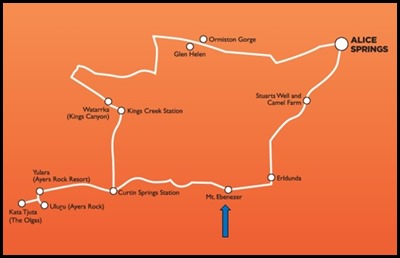 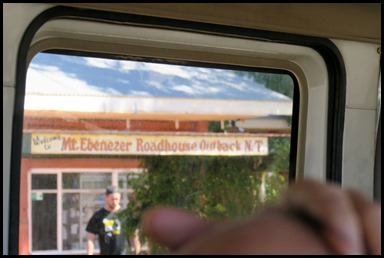 Another hour and a half on the road
and our second rest stop was Mt. Ebenezer Roadhouse,
Outback, Northern Territory.
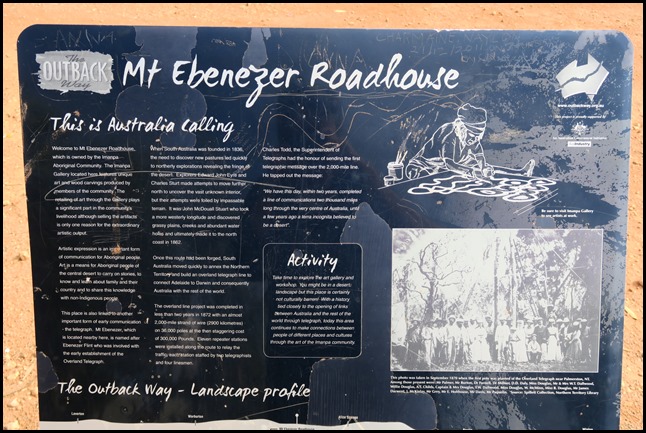 I nipped across the road as I saw
an information board about the area.
It read: This is Australia
calling. Welcome to Mt Ebenezer Roadhouse, which is owned by the Imanpa
Aboriginal Community. The Imanpa Gallery located here features unique art and
wood carvings produced by members of the community. The retailing of art through
the Gallery plays a significant part in the community’s livelihood although
selling the artifacts is only one reason for the extraordinary artistic
output.
Artistic _expression_ is an
important form of communication for Aboriginal people. Art is a means for
Aboriginal people of the central desert to carry on stories, to know and learn
about family and their country and to share this knowledge with non-indigenous
people.
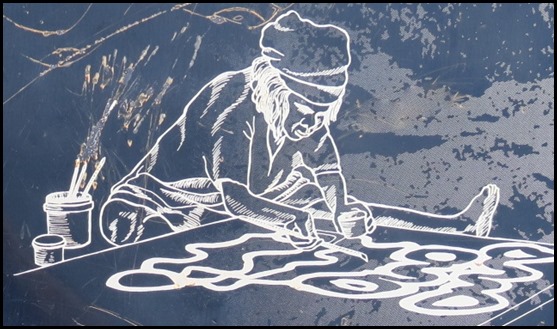 This place is
also linked to another form of early communication – the telegraph. Mt Ebenezer,
which is located nearby here, is named after Ebenezer Flint who was involved
with the early establishment of the Overland Telegraph.
When South
Australia was founded in 1936, the need to discover new pastures led quickly to
northerly explorations revealing the fringe of the desert. Explorers Edward John
Eyre and Charles Sturt made attempts to move further north to uncover the vast
unknown interior, but their attempts were foiled by impassable terrain. It was
was John McDouall Stuart who took a more westerly longitude and discovered
grassy plains, creeks and abundant water holes and ultimately made it to the
north coast in 1862.
Once this stop
had been forged, South Australia moved quickly to annex the Northern Territory
and build an overland telegraph line to connect Adelaide to Darwin and
consequently Australia with the rest of the world.
This overland
line project was completed in less than two years in 1872 with an almost
2,000-mile strand of wire (2900 kilometres) on 36,000 poles at the staggering
cost of 300,000 Pounds. Eleven repeater stations were installed along the route
to relay the traffic, each station staffed by two telegraphists and four
linesmen.
Charles Todd, the
Superintendent of Telegraphs had the honour of sending the first telegraphic
message over the 2,000-mile line. He tapped out the message: “We have this day,
within two years, completed a line of communication two thousand miles long
through the very centre of Australia, until a few years ago a terra incognita
believed to be a desert.
Activity: Take
time to explore the art gallery and workshop. You might be in a desert landscape
but this place is certainly not culturally barren! With a history tied closely
to the opening of links between Australia and the rest of the world through
telegraph, today this area continues to make connections between people of
different places and cultures through the art of the Imanpa
community.
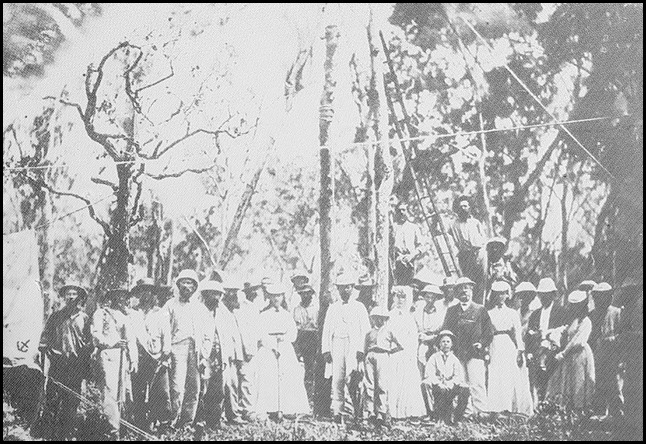 This photo
was taken in September 1870 when the first pole was planted of the
Overland Telegraph near Palmerston, NT. Among those present were: Mr Palmer, Mr
Burton, Dr Furnell, Dr Millner, D.D. Daly, Miss Douglas, Mr & Mrs W.T.
Dallwood, Willie Douglas, A.T. Childs, Captain and Mrs Douglas, E.W. Dallwood,
Miss Douglas, W. McMinn, Miss B. Douglas, Mr James Darwent, J. McKinlay, Mr
Grey, Mr E, Holthouse, Mr Davis, Mr Paquelin.
Source: Spillett Collection,
Northern Territory Library. We think some of the ladies would have swooned in
the heat, just look at all their clothing.
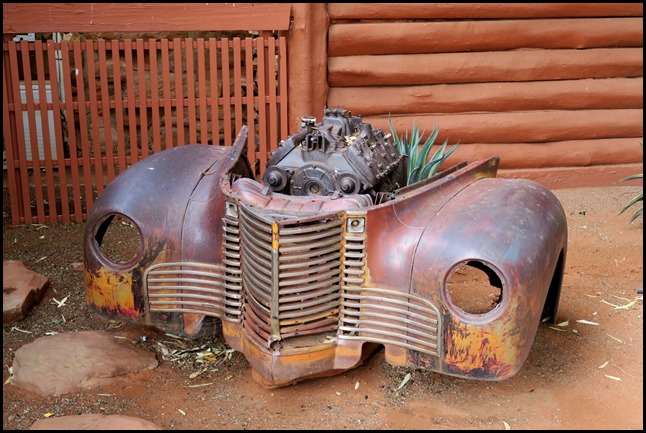 Outside on a tree we saw several
galahs and a few tiny finches, there was a smashing One
Careful Owner by the main door.
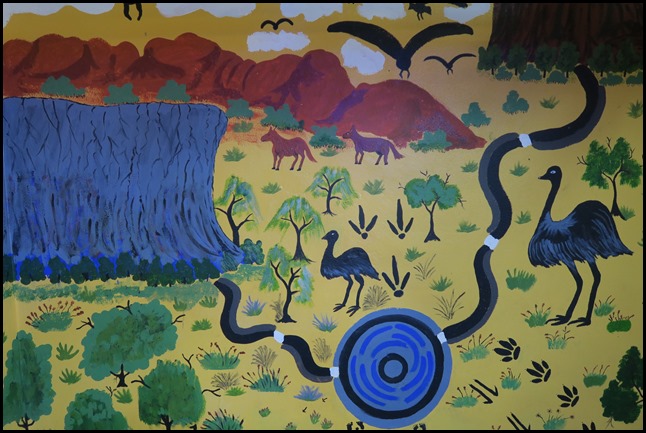 It was polite not to take photographs
in the gallery but this local artwork was on the wall
leading to the toilets.
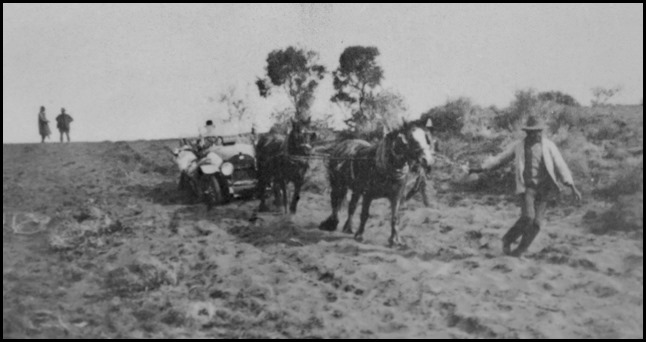 On a notice
board near the gallery were some great old photographs: Travel in Central Australia was difficult in the
1930’s.
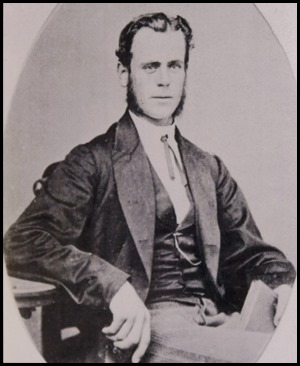 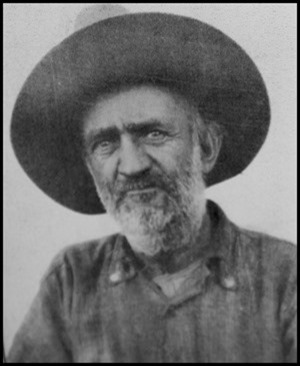 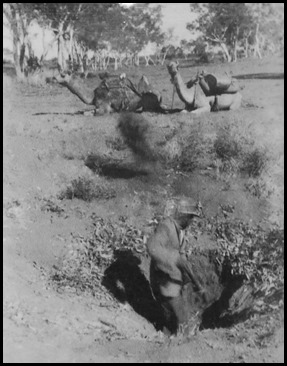 Young Englishman, W.W. Mills, surveyed sections of the Overland Telegraph
Line south of Alice Springs. Bill Liddle arrived in
the centre in 1907 to work at the Alice Springs Telegraph Station before
establishing Kings Canyon and Angas Downs. Digging for
water – the camels look on.
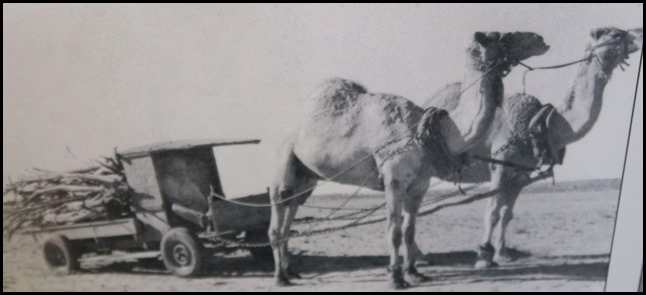 Bill Liddell and his
camel buggy.
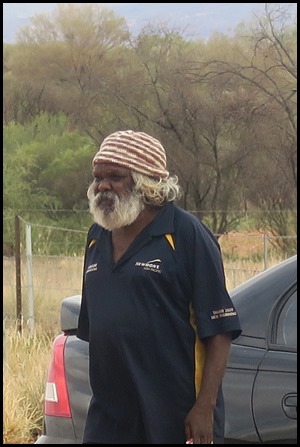 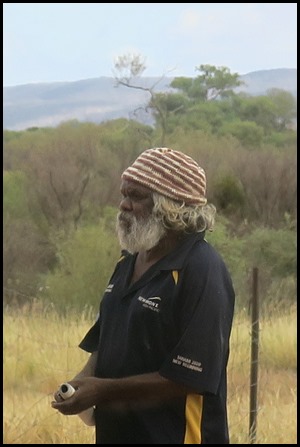 Back on the bus after a
great cup of tea and two fly nets under our arms, we saw a
wonderful looking Aboriginal man crossing the road, what a face.
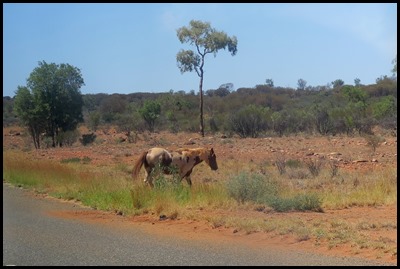 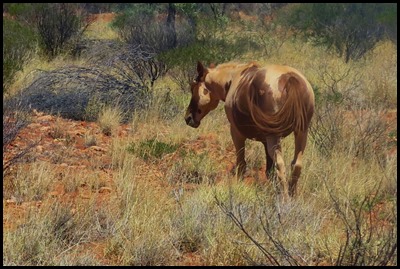 Not
long after we were back on the road, we saw our first wild
horses.
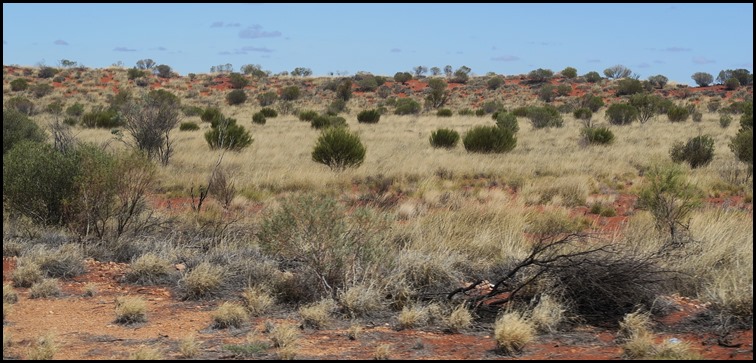 The scenery around Mt
Ebenezer.
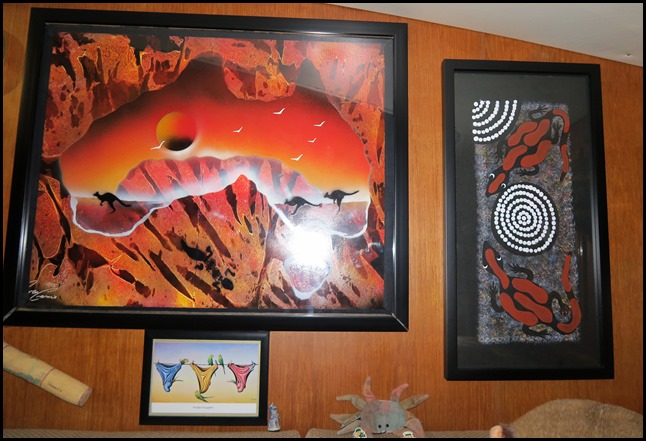 I
had wanted a real Aboriginal painting since our first
visit eighteen months ago. Many temptations in Sydney but they wanted a hundred
dollars. At the Uluru Cultural Centre they wanted several times that. On our
return stop at Mt Ebenezer it sprung at me – a goanna. None in the gallery, my
gorgeous man with the beard told me to ask the ladies painting outside. Sherry
had just the thing and she wanted twenty dollars, how thrilled am I. Framed
my pair of chaps look rather handsome next to Bear’s
stunning Darren Germain. Marvellous. Bear sad that the flash obliterated Tasmania.......
Oops.
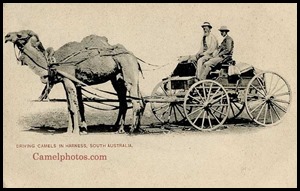 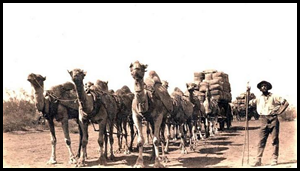 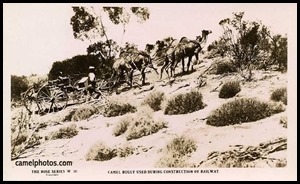 Back at Alice Springs we looked up
camel buggies and found a wonderful website called
Camelphotos.com.
ALL IN ALL IT FEELS REALLY
OUTBACK NOW
A GOOD REST
STOP |